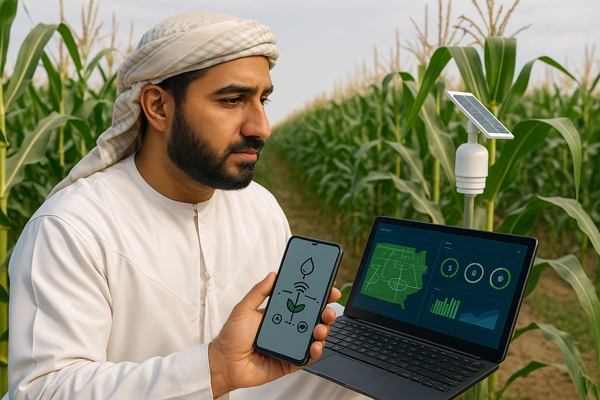 |
RacingBetter News |
| Friday 14th November 2025 | |
Smart Farming Technologies Growing in Agribusiness

For generations, farming moved with the seasons. Families trusted the sky, the wind, and their memory. They knew when the ground was ready or when rain would come. That knowledge built whole communities. During the past century, machines replaced much of the labour but not the thinking. Today, the real shift comes from data – numbers replacing instinct, sensors replacing the eye, and algorithms working beside farmers.
This change links agriculture with other digital fields. In many ways, farming and betting share the same rhythm: prediction, calculation, and timing. Both depend on reading patterns before they appear. 1xbet online sits within that logic of precision – the same habit of watching trends and weighing possibilities. Modern agriculture uses this mindset to decide when to plant or harvest. Smart farming now part of daily life for investors and rural communities.
Machines that read the earth
Across dry regions, fields hum with quiet signals. Moisture sensors buried in the soil report real-time data to mobile dashboards. Drones scan crops for colour change or early stress. Tractors move along planned routes guided by satellites. A single device can now replace hours of fieldwork.
Farmers use these systems to cut costs and reduce waste. They work with numbers instead of routine. Among the most common digital tools are:
• Soil sensors that measure nutrients and water content.
• Drones mapping plant growth and pest damage.
• Automatic irrigation linked to temperature data.
• Apps predicting yield before harvest.
The purpose is not speed but precision. When each drop of water or litre of fuel counts, accuracy becomes more valuable than effort.
Reading numbers, not guessing seasons
Old farming relied on memory. Now it relies on records. Every hectare produces a map of its behaviour. Farmers use historical data to predict next season’s needs. Software turns those patterns into small adjustments that make a large difference over time.
These tools resemble the analytical models used in betting markets. Both study past results to forecast future events. The method may differ, but the discipline is the same: control uncertainty through information. Such data also helps banks, insurers, and food traders estimate future supply, connecting rural work with financial systems once far removed from it.
Technology meeting sustainability
Digital farming is not only about yield. In many regions, it helps protect scarce water and reduce chemical use. Drones apply fertiliser only where needed. Smart pumps work with solar energy. Automated irrigation reduces runoff in arid areas. The idea is simple: use less but think more.
Examples of this balance include:
• Solar-powered water pumps replacing diesel units.
• Moisture control limiting over-irrigation.
• Data-led rotation to restore soil health.
• Remote supervision that saves travel time and fuel.
Such methods blend modern engineering with respect for nature. They suit areas where land and water are precious, including much of the Arabic world.
A new kind of rural work
Alongside farmers now stand drone operators and data analysts. Many of them live in cities yet work daily with fields hundreds of kilometres away. The countryside connects with the digital economy through laptops and satellites rather than roads.
Local universities and startups have started training programmes in agritech. The result is a mix of tradition and innovation, where farming remains a heritage but adopts a scientific voice. Investment follows this pattern, as agribusiness attracts funding once reserved for technology or finance.
What lies ahead
Digital systems will not replace the farmer. They extend the reach of human judgement. Machines can process soil data, but only people understand the story behind it. The future of agriculture depends on that partnership.
Smart farming represents continuity, not disruption. It follows the same principle that has guided cultivation for centuries: learning from the land. Only the tools have changed. Today, information replaces observation, but the goal remains unchanged – to make the earth productive without exhausting it.
In this way, agriculture enters the digital age quietly, without slogans or spectacle. It grows through precision, balance, and respect for what has always mattered most: the land itself.







